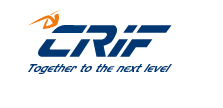
Insurance Fraud Detection Software – Solution Brief: The insurance industry is increasingly facing the challenge of fraudulent claims, significantly negatively impacting insurers and consumers. These claims especially burden insurers, ultimately leading to higher premiums for consumers. The growing wave of fraudulent claims drives the need for advanced fraud detection software and more sophisticated investigation techniques.
The Rising Wave of Fraudulent Claims
A growing problem: Fraudulent claims have become a significant issue in the insurance industry, with perpetrators using various methods to deceive insurers. These tactics can range from inflating the value of a claim to staging accidents or filing multiple claims for the same loss.
Cost to insurers: The financial burden on insurers is enormous, with billions of dollars lost annually due to fraud. These losses put pressure on insurance companies, reducing profitability and leading to increased scrutiny of all claims.
Adverse Effects on the Ecosystem
- Increased premiums: As insurers face growing losses due to fraudulent claims, they are forced to offset these losses by raising premiums. This impacts all consumers, even those not engaging in fraudulent activities.
- Erosion of trust: Fraudulent claims undermine the relationship between insurers and policyholders, leading to a lack of trust and confidence in the industry. This can ultimately result in decreased demand for insurance products.
Investigating and Resolving Fraudulent Claims
- Traditional methods: Insurers rely on a combination of underwriting, claims adjusters, and anti-fraud investigators to identify and resolve fraudulent claims. These professionals use their expertise to assess the validity of claims and gather evidence to support or refute fraud allegations.
- Advanced analytics and AI: Insurance companies are increasingly relying on advanced analytics and artificial intelligence (AI) to help identify patterns indicative of fraud. Machine learning algorithms can analyze large volumes of data and spot anomalies and red flags that may indicate fraudulent behavior.
The Current State of Insurance Fraud Detection Software
Insurance Fraud detection software: Today’s fraud detection software incorporates various technologies, including machine learning, data analytics, and text analysis, to identify potential fraud in insurance claims. These systems are designed to quickly and efficiently analyze large volumes of data, helping insurers identify and address fraudulent claims before they result in significant financial losses.
Challenges and limitations: While fraud detection technology has significantly advanced, it still faces challenges. False positives can lead to unnecessary investigations, while false negatives allow fraudsters to slip through the cracks. Additionally, as technology advances, so do the tactics employed by fraudsters, creating a constant battle to stay ahead of emerging threats.
The rising wave of fraudulent claims in the insurance industry is a pressing concern, with far-reaching consequences for insurers, consumers, and the ecosystem as a whole. To combat this growing problem, insurers increasingly turn to advanced fraud detection technology to help identify and resolve fraudulent claims more quickly and effectively. However, challenges remain, and the insurance industry must continue to innovate and invest in new technologies and strategies to stay ahead of increasingly sophisticated fraudsters.
Many insurers are upgrading their fraud detection capabilities and implementing new-generation fraud detection software.
List the features and functionality of a best-in-class Fraud Detection Solution.
A best-in-class fraud detection solution should encompass a wide range of features and functionality to effectively combat fraudulent activities in the insurance industry. Some of the essential components include:
- Advanced analytics: The solution should leverage advanced analytics to extract patterns and trends indicative of fraud.
- Data integration: The system should be capable of integrating and processing data from multiple sources, including internal databases, external data providers, and third-party services, to create a comprehensive view of each claim.
- Real-time analysis: A best-in-class solution should be able to analyze data in real time, allowing for early detection and prevention of potential fraud before it results in significant financial losses.
- Anomaly detection: The system should detect unusual patterns and anomalies in the data, which can indicate fraudulent activities.
- Risk scoring: The solution should generate risk scores for each claim based on various factors, such as the claimant’s history, policy details, and claim characteristics. This helps prioritize high-risk claims for further investigation.
- Text analysis: The ability to analyze unstructured data, such as claim descriptions, adjuster notes, and supporting documents, can help identify potential fraud indicators.
- Network analysis: Identifying relationships and connections between claimants, providers, and other entities can reveal organized fraud schemes and suspicious activities.
- Geospatial analysis: Incorporating geographic information can help detect fraud patterns by identifying clusters of suspicious activities in specific locations or regions.
- Visualization tools: Effective visualization tools can help investigators quickly understand complex relationships and patterns in the data, enabling faster decision-making and more efficient fraud detection.
- Case management: The solution should provide a centralized case management system that allows investigators to track, manage, and document their findings efficiently.
- Collaboration tools: The system should facilitate collaboration between investigators, analysts, and other stakeholders, enabling them to share information and insights quickly and efficiently.
- Scalability and adaptability: A best-in-class solution should be scalable to handle large volumes of data and adaptable to evolving fraud patterns and tactics.
- Compliance and regulatory support: The solution should provide tools and features to help insurers comply with industry regulations and reporting requirements.
- Customization and flexibility: The fraud detection solution should be customizable to suit each insurance company’s specific needs and requirements, allowing for the creation of tailored fraud detection strategies.
- Robust security: To protect sensitive data and maintain privacy, the system should be built with robust security measures and adhere to industry best practices.








